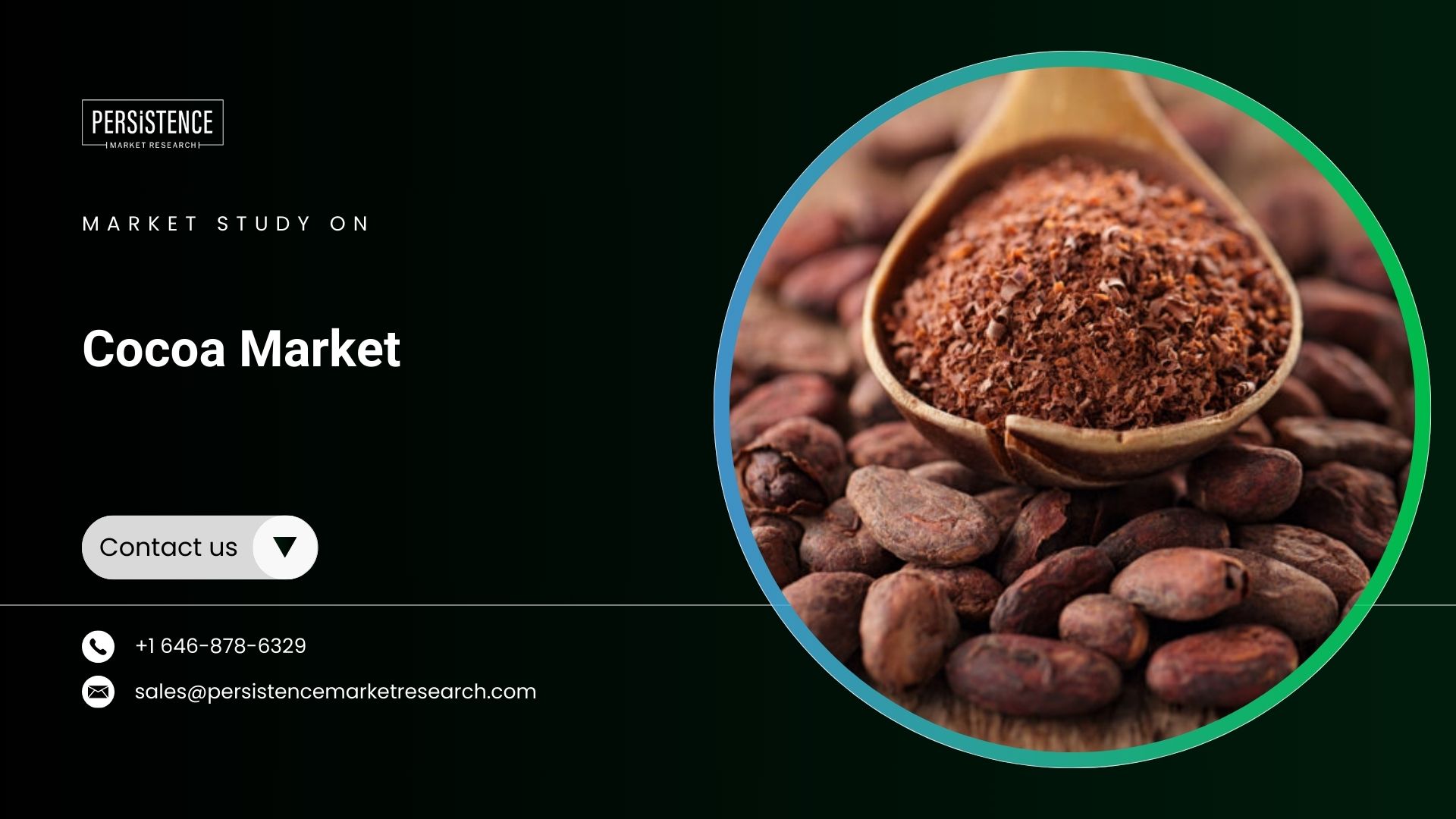Trends Shaping the Global Cocoa Market in 2025

Strong 8k brings an ultra-HD IPTV experience to your living room and your pocket.
The global cocoa market is experiencing significant transformations in 2025, driven by evolving consumer preferences, supply chain challenges, and technological advancements. These trends are reshaping the industry's landscape, influencing production, pricing, and consumption patterns worldwide.
Market Growth and Projections
According to Persistence Market Research, the global cocoa market is projected to expand from US$ 11.2 billion in 2025 to US$ 14.8 billion by 2032, reflecting a compound annual growth rate (CAGR) of 4.3% during this period. This growth is attributed to the rising demand for dark, high-quality chocolate in industrialized countries, driven by health awareness regarding antioxidant benefits and a preference for ethically sourced cocoa with fair trade certifications.
Surging Cocoa Prices
In 2024, cocoa production reached US$ 13.2 billion, fueled by high demand for dark chocolate, which is rich in flavonoids and antioxidants that support cardiovascular health. However, the market faces challenges due to soaring cocoa prices. Factors such as adverse weather conditions and disease outbreaks in West Africa have led to a significant decline in production, causing cocoa prices to nearly double. As of early 2025, cocoa prices stood at $10,068 per metric ton, nearly double the price a year ago.
Impact on Confectionery Companies
Major confectionery companies are feeling the impact of rising cocoa costs. Hershey reported strong fourth-quarter earnings in 2024, with adjusted earnings of $2.69 per share and net sales of $2.89 billion. The company managed to offset higher cocoa costs through price adjustments and cost-cutting measures. However, Hershey anticipates lower earnings per share and modest sales growth for fiscal 2025 due to ongoing commodity cost pressures.
Similarly, Mondelēz International, the parent company of Cadbury, forecasts a larger-than-expected decline in annual profit due to soaring cocoa prices. The company has raised prices to manage increased costs, which has led some cost-conscious consumers to seek more affordable alternatives. Mondelēz projects a 10% drop in adjusted profit for 2025, surpassing analysts' estimates of a 6.7% decline.
Hedging Strategies and Supply Chain Diversification
To mitigate the impact of volatile cocoa prices, companies like Hershey are employing hedging strategies using derivatives. In 2024, Hershey secured a $460 million pretax gain through futures contracts, contributing to a full-year profit of $2.22 billion. These financial instruments help stabilize buying costs and manage market fluctuations.
Additionally, there is a growing emphasis on diversifying cocoa supply sources. Traditionally, West Africa has been the primary region for cocoa production. However, companies are exploring new suppliers and regions to enhance resilience against price shocks and supply disruptions. This diversification aims to create a more stable and sustainable supply chain for the future.
Consumer Preferences and Ethical Sourcing
Consumer preferences are increasingly leaning towards dark, high-quality chocolate, driven by health awareness regarding antioxidant benefits. There is also a growing demand for ethically sourced cocoa, with consumers favoring products that carry fair trade certifications. This trend is encouraging companies to adopt sustainable sourcing practices and ensure transparency in their supply chains.
Technological Advancements and Innovation
Technological advancements are playing a crucial role in shaping the cocoa market. Innovations in farming practices, such as precision agriculture and disease-resistant crop varieties, are helping improve yield and quality. In the manufacturing sector, companies are investing in research and development to create new chocolate formulations that cater to health-conscious consumers, including products with reduced sugar content and functional health benefits.
Sustainability Initiatives
Sustainability remains a key focus in the cocoa industry. Companies are implementing programs to support cocoa farmers through fair pricing, education, and resources to promote sustainable farming practices. These initiatives aim to improve the livelihoods of farmers, ensure long-term supply stability, and meet consumer demand for ethically produced products.
Conclusion
The global cocoa market in 2025 is characterized by dynamic changes driven by consumer preferences, supply chain challenges, and technological innovations. While the industry faces hurdles such as rising cocoa prices and supply constraints, companies are adopting strategies like hedging, supply diversification, and sustainability initiatives to navigate these challenges. As the market continues to evolve, stakeholders must remain adaptable and forward-thinking to capitalize on emerging opportunities and ensure the industry's sustainable growth.
Note: IndiBlogHub features both user-submitted and editorial content. We do not verify third-party contributions. Read our Disclaimer and Privacy Policyfor details.







